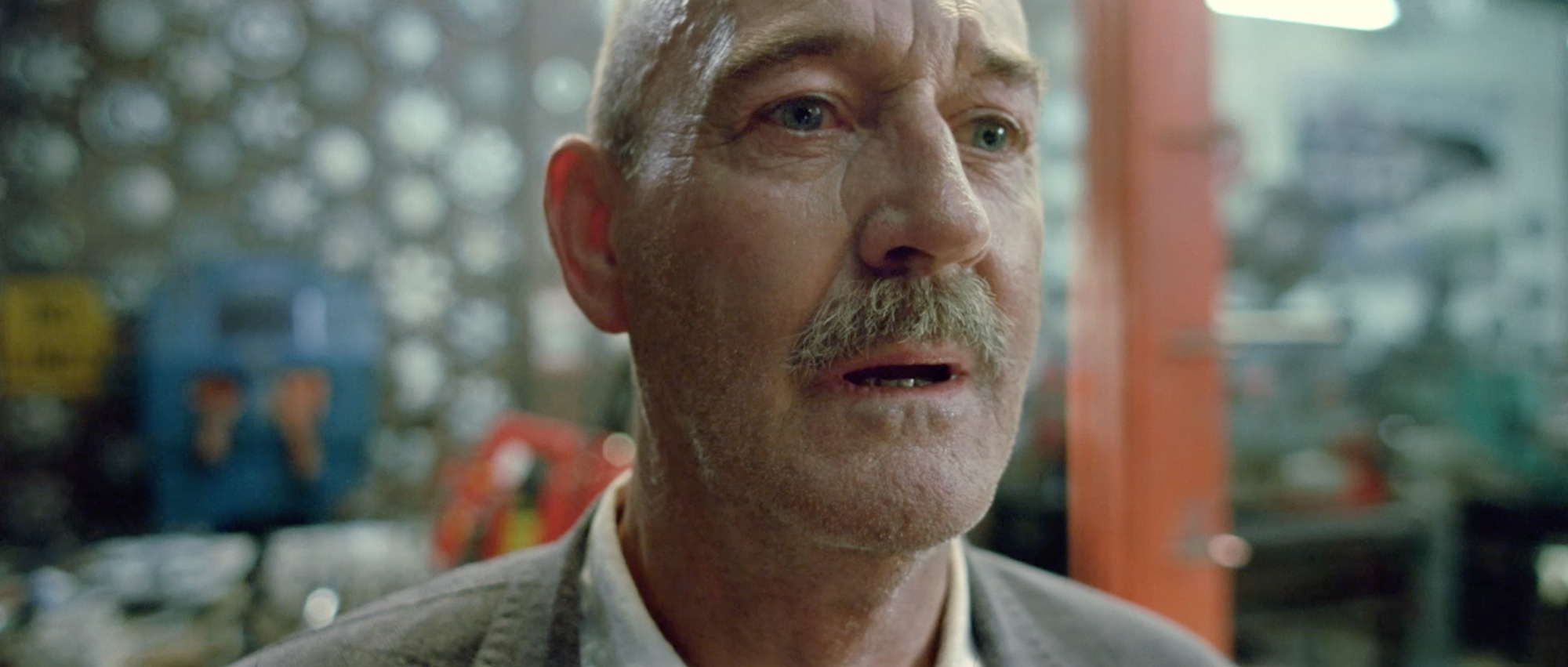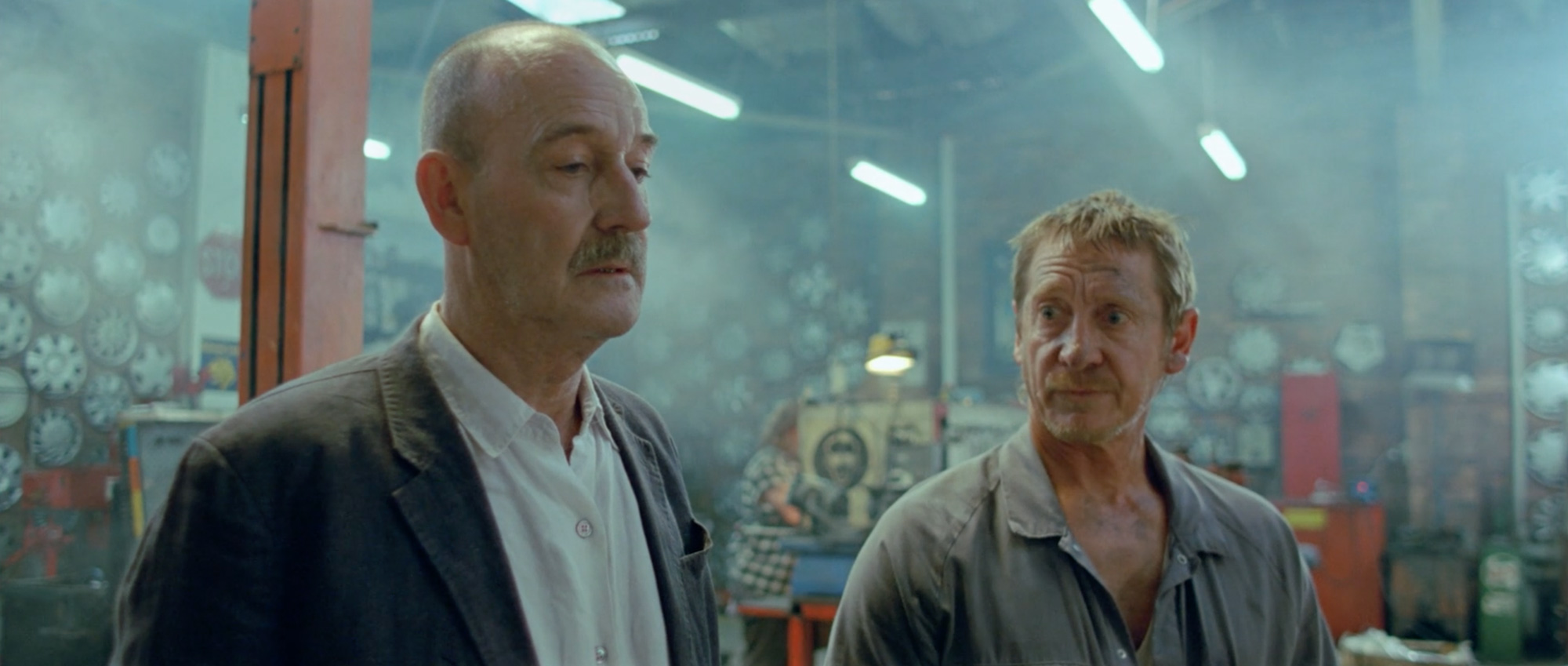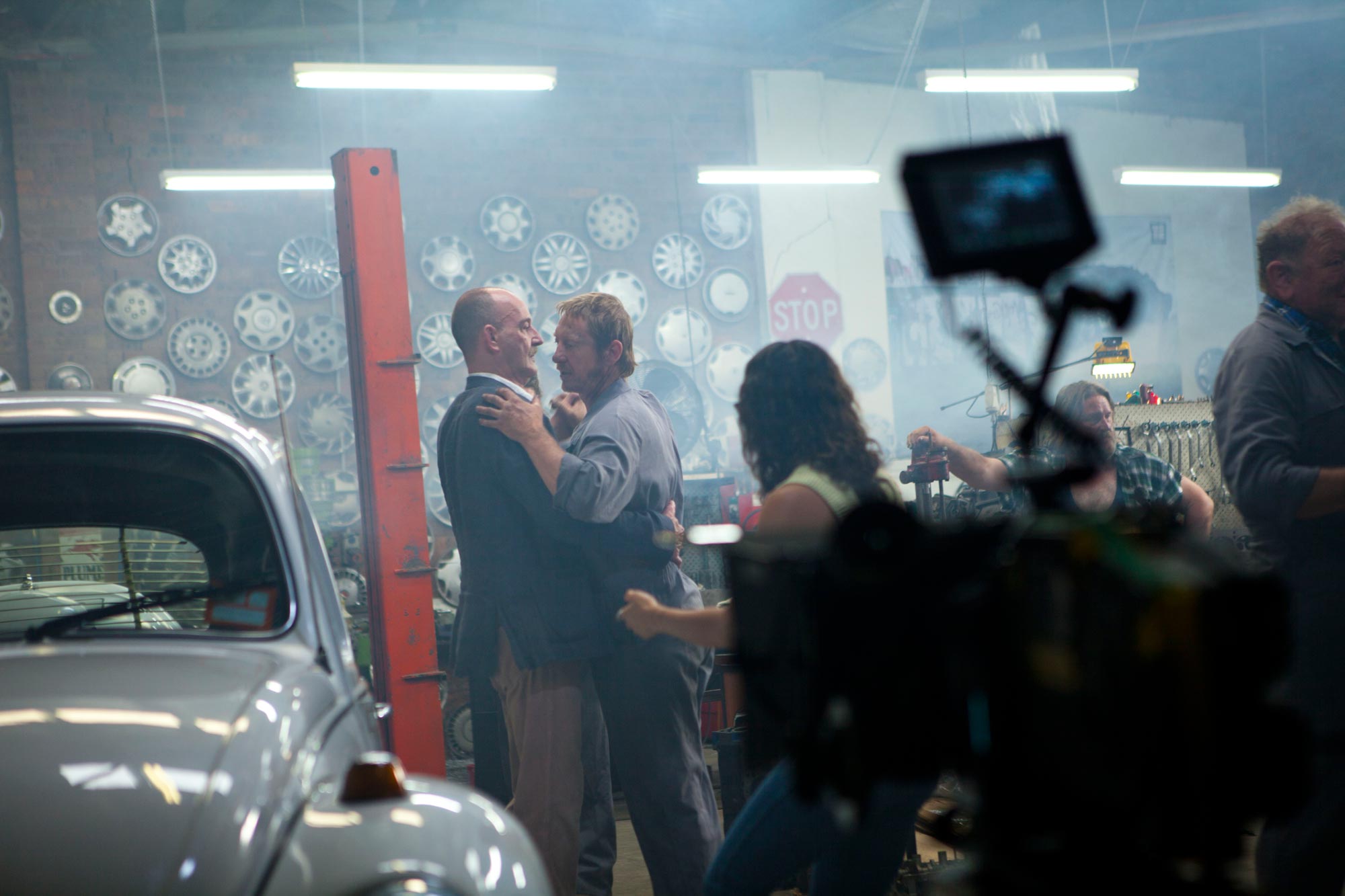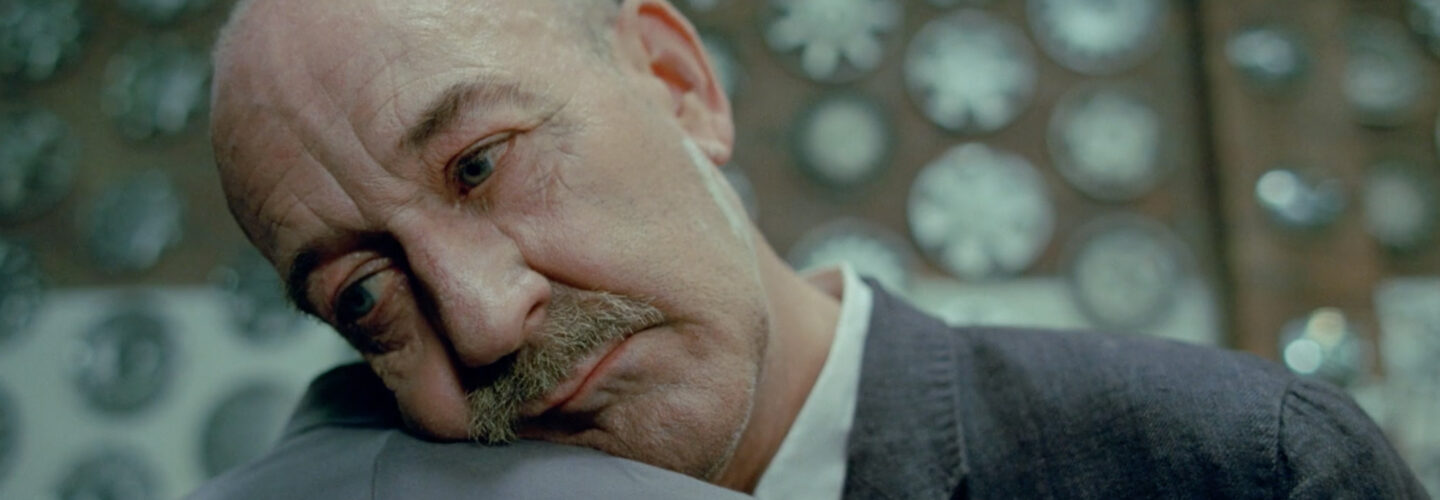
There are situations in life where years of conditioning have taught us the prudence of keeping a tight grip on our emotions, least we suffer the unmerciful onslaught of self-inflicted ridicule. The male-centric domain of the mechanics’ garage is definitely high on this unofficial list, but as Director Jessica Barclay Lawton demonstrates in her surprisingly tender short We Keep on Dancing, sometimes it’s possible to find comfort in the most unlikely of places. DN caught up with Jessica and her writing and producing partner Rhys Mitchell to discover how restricting their lens selection opened up the emotional impact of this empathetic short.
We Keep on Dancing was your first collaboration with Writer Rhys Mitchell who you founded Jerry Projects with in 2012. What led the two of you set up a production company together?
Jess: In the midst of the process of making We Keep on Dancing, it became very clear to Rhys and I that we were onto a special thing. Never before had a project felt so organic, spontaneous or as perfectly supported as …Dancing. We instantly felt that we needed to cement this good thing, and keep creating more! So shortly after filming we founded Jerry Projects. We have since produced a handful of shorts, still circulating and soon to make their way online, while developing more long form content. We’re also both very active independently with other outlets and partnerships and continue to support each other to keep creating in whatever capacity it may be!
The juxtaposition between the highly alpha male environment of the garage makes the tenderness of the story hit especially hard. How did this subversive tale of emotional empathy come about?
Rhys: The original story was developed when my friend, Ben Hopping drove round to show me the new sound system he had installed in his old car. He came round to show me his handiwork and the impact was impressive, indeed. It was so impressive and so pervasive, that we started to dance to the booming music. It was an inspiring moment and an entirely unpredictable one. My brother, Lewis and I decided to film it. So Ben and I dressed up in tuxedos and Lewis filmed us dancing to Frank Sinatra, as his voice reverberated in the garage. We did it for a few laughs but, watching the video with Jessica, I had an idea and our film is that idea given flesh and bones.

This story hinges on the relationship between Alan and Danny convincingly traversing from indulgent aggravation to touching compassion. How did you cast your principle actors and then work with them to achieve that progression naturally?
Jess: Interestingly we had actually originally sought to cast our actors in opposite roles. William Gluth, who plays Alan the sensitive sculptor, auditioned for the role of the mechanic, and John Brumpton, who plays the mechanic, we had originally hoped to cast as the sensitive sculptor. John was actually shooting an indie feature up in Sydney till the day before shooting and couldn’t commit to the role of Alan, so we decided to throw caution to the wind and mix the roles up. This organic mix up was fated to be and we couldn’t be more thankful to them both for trusting us and bearing their all in their performances. John and William didn’t have the opportunity to rehearse prior to the day of filming, as John flew in from Sydney on the red eye the morning of shoot. The subsequent detachment to William’s character, having not rehearsed together, brought a palpable energy to set. This combined with William’s ability to be so raw and vulnerable in his character, and the freedom of space allowed with the 18mm lens, was an unforeseen recipe for something beautiful and unique to flourish.
We shot the entire film on one single 18mm lens.
When it came to your camera set up you purposely reduced the tools at your disposal by exclusively shooting on an 18mm lens. How did that dictate the look of the film and alter your approach on set?
Jess: In translating the script to screen, Cinematographer Edward Goldner and I knew that we needed to adopt a visual language which would play an important role in allowing the audience to sit by un-interferingly as the characters relationship developed, and yet when the characters called for it, to connect and engage in an almost uncomfortably intimate manner. To achieve this we shot the entire film on one single 18mm lens. When shooting wide it allowed our actors the space of the whole floor to move around uninhibited by usual camera restrictions. There was an almost stage like feeling on the day. On the flip side of this, when we moved in for close ups we had to physically move so close that you could practically see breath on the lens. This brings an incredible feeling of intimacy with the characters in the viewing experience.



How did you come to choose Jimmy Carroll’s I’m With My Baby Tonight as the accompaniment to the dance?
Jess: We had a truly wonderful track by Fred Neil in the original version of the film. Sadly, the licensing fee to use it online would have led us down a path of freeganism, so we decided to look elsewhere.
Rhys: Jimmy Carroll is a dear friend of mine. My band played a show with him last year, and we loved his music. It felt appropriate for the film. It is both strong and sensitive.
Last year people had the opportunity to watch We Keep on Dancing in the air. How did the Virgin flights distribution deal come about?
Jess: We’ve had some pretty peculiar and wonderful distributions opportunities for We Keep on Dancing over the years, including a run on Japanese TV and a feature in a Spiritual Cinema magazine. Our wonderful distributors over at Flickerfest Film Festival lined up this cool opportunity for the film. I almost booked a joy flight just so I could see it at 30,000 ft!
What projects do you have on your upcoming slate?
Jerry Projects is developing a slate of short, feature and web-series projects, all the while independently working on various short films, music videos, web series, documentaries, artworks, and scripts. Our first feature in development is Paradise Palms, the story of a gravedigger on the edge of an even greater chasm.


